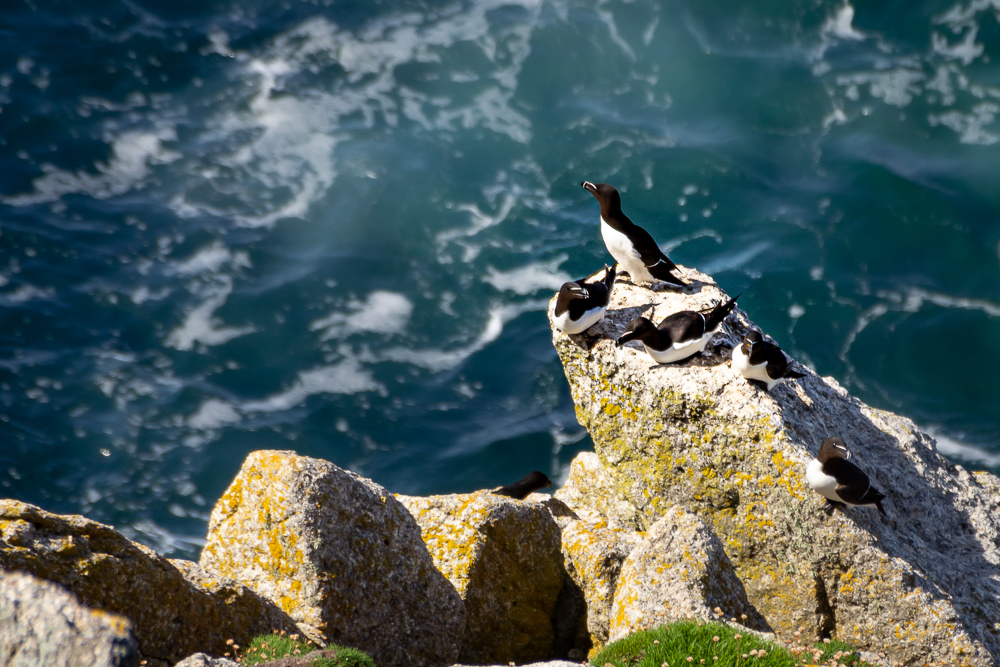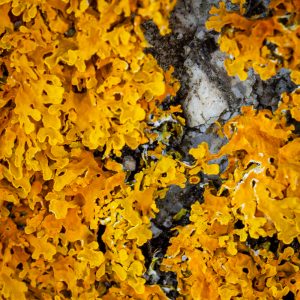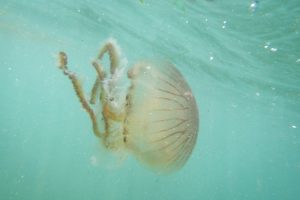Off to the island - photographing Lundy Island
I did not look for solitude at all, but my friend Emma was enthusiastic about Lundy Island. She said that I, as a photographer, absolutely needed to go there and photograph the stunning nature. So in the summer of this year, I spent 3 days in beautiful nature on this small island, which the Telegraph calls one of the most peaceful places in the UK.

Lundy Island is located off the English coast in the Atlantic Ocean with one side to the Bristol Channel and the other in the open Atlantic. At only 4.5 km2, it is only slightly larger than Heligoland in Germany (4.2 km2). However, with only about 30 inhabitants on Lundy, it is much thinner populated. Lundy Island is about 4.5 km long and 1 km wide. Ideal for exploring the island on foot.
What do you need to know
The island is managed by the Landmark Trust, a charity whose main focus is on the preservation of Lundy’s natural environment.
Lundy Island is officially plastic free. A paradise for plants, animals and even rare lichens.
There are no paved roads or traffic, the only pub stays open, so you can crawl in anytime and from midnight to 6am there is no electricity, because the generator is turned off.

You have to plan in advance, if you want to come to Lundy for a photo trip, as accommodation is limited. There is a campsite with about 50 places and 23 self-catering accommodation for about 80 people.
On some days you are really with less than 80 people on this island, since no ferry pours out day tourists. Ideal for nature and landscape photographers.
Since the ferry leaves from either Bideford or Ilfracombe, it is worth exploring the South West Coast Path nearby and not miss Morte Point.

When you’re on Lundy Island, it’s best to head off in the morning or evening, because that’s when the light is best.
Letting yourself drift is just a great feeling of freedom.
You may get shrews, sika deer, soy sheep, seals or known and unknown birds, but stunning landscape for sure in front of the lens.


Lundy Island: Jenny's Cove
Be sure to check out Jenny’s Cove on the west side of the island. There you will find the most birds and great rock formations for sunset photos.
In summer there are guided walks for the day tourists. An experienced ranger tells you everything you want to know about the flora and fauna including the special one in Jenny’s Cove.
Yes, there are even puffins at Jenny’s Cove. However, to get a decent photo, you need a very good telephoto lens. My tip, if you want to photograph puffins, go to the Scottish “Isle of May“, where my photo was taken. To get there, you should book the day trip ahead of time. However, you will get very close, up to a few meters, to these cute birds.


A paradise for macro photographers


There are also rare endemic plants on Lundy Island. The island has its own endemic cabbage and its own beetle on it. Yes, here it is worth to unpack the macro lens, because the Lundy cabbage flea beetle measures is only 3mm in length.
The true weevil that is adapted to the Lundy cabbage is even smaller and you need patience and sharp eyes to bring home a good picture.
It is simpler with the photogenic orange-red lichen golden hair lichen, Telschistes flavicans, a very rare species of lichen in the midst of 350 different lichen species that are found on Lundy Island.
If you are fascinated by small things as much as me, you will get your money worth. My photos are taken with a 90mm Tamron f/2.8, which puts your objects 1: 1 on the sensor. If you want to do extreme macro photography, Canon offers the MP-E 65mm Macro f/2.8. This can then display your object 5x larger, but you can use it only for macro photography.






Lighthouses and wide view
Lundy Island actually has three lighthouses. They are especially photogenic in the evening and morning at the golden and blue hour. The old lighthouse in the middle of the island was built in 1819. It is built on Beacon Hill 469 feet (143 m) above sea level which is the highest base for a lighthouse in Britain. But soon it turned out that it often lies in the fog. That’s why two more lighthouses with foghorns were built at the north and south end of the island.

You can go up the many steps at the Old Light to look from above over the whole island and to the mainland and take awesome pictures. 😉What the British call mainland here, is in fact the southwest coast of England and the south coast of Wales.
Snorkeling and underwater photography


Lundy Island has a lot of cliffs and you rarely really get down to the sea. One of the few places where you can get down, of course, is the ferry landing.
In the summer the local biologists offer to go snorkeling there. Do not miss this, even if you are completely frozen after about half an hour in the water.
Great photo opportunities are waiting for you, if you have a waterproof camera or, like me, can borrow it from a friend.



As always, I am happy about comments under the post. What did you already know about Lundy Island? Is it worth a trip for you?
Wish you lots of great photos wherever you are.
Kate

